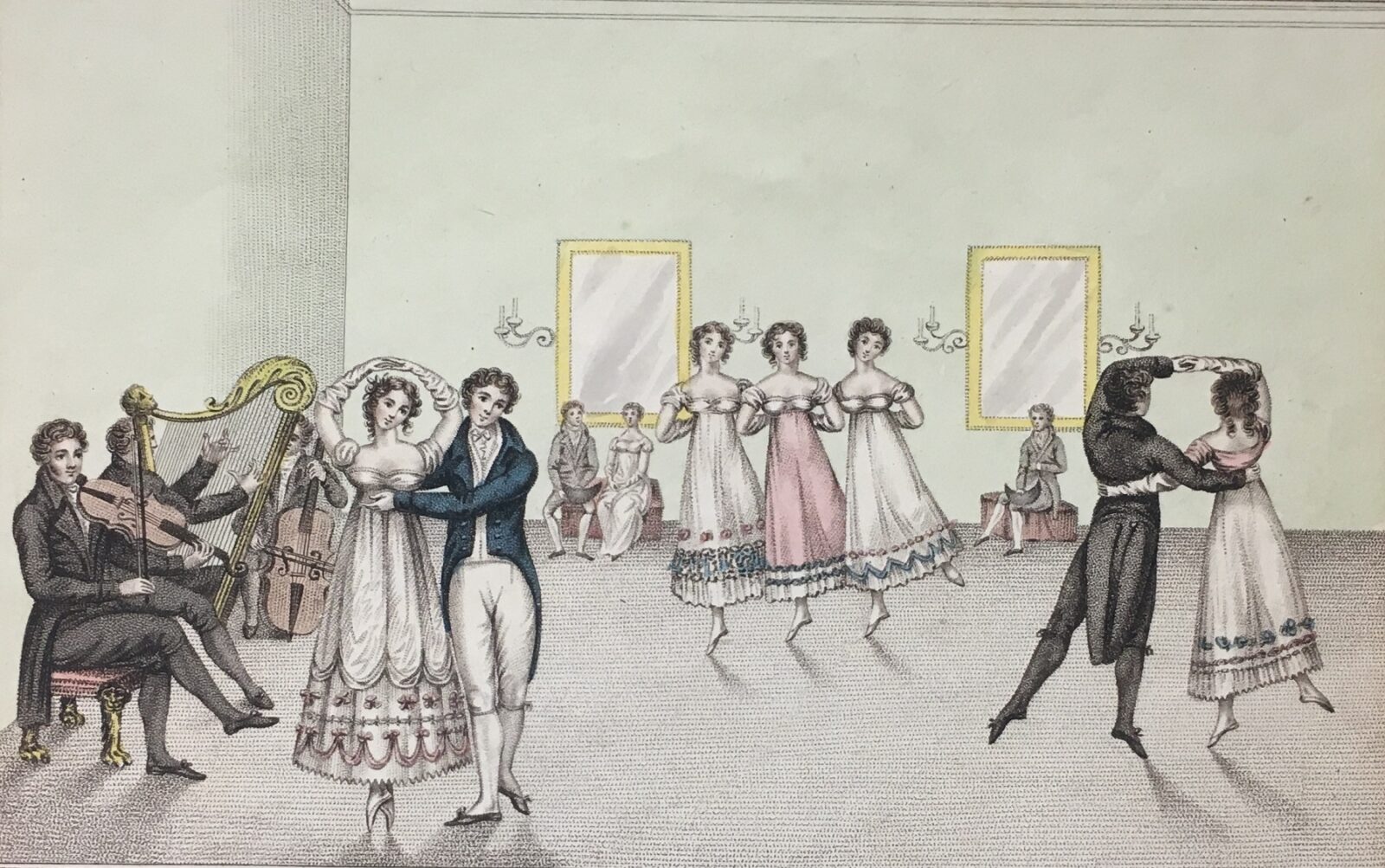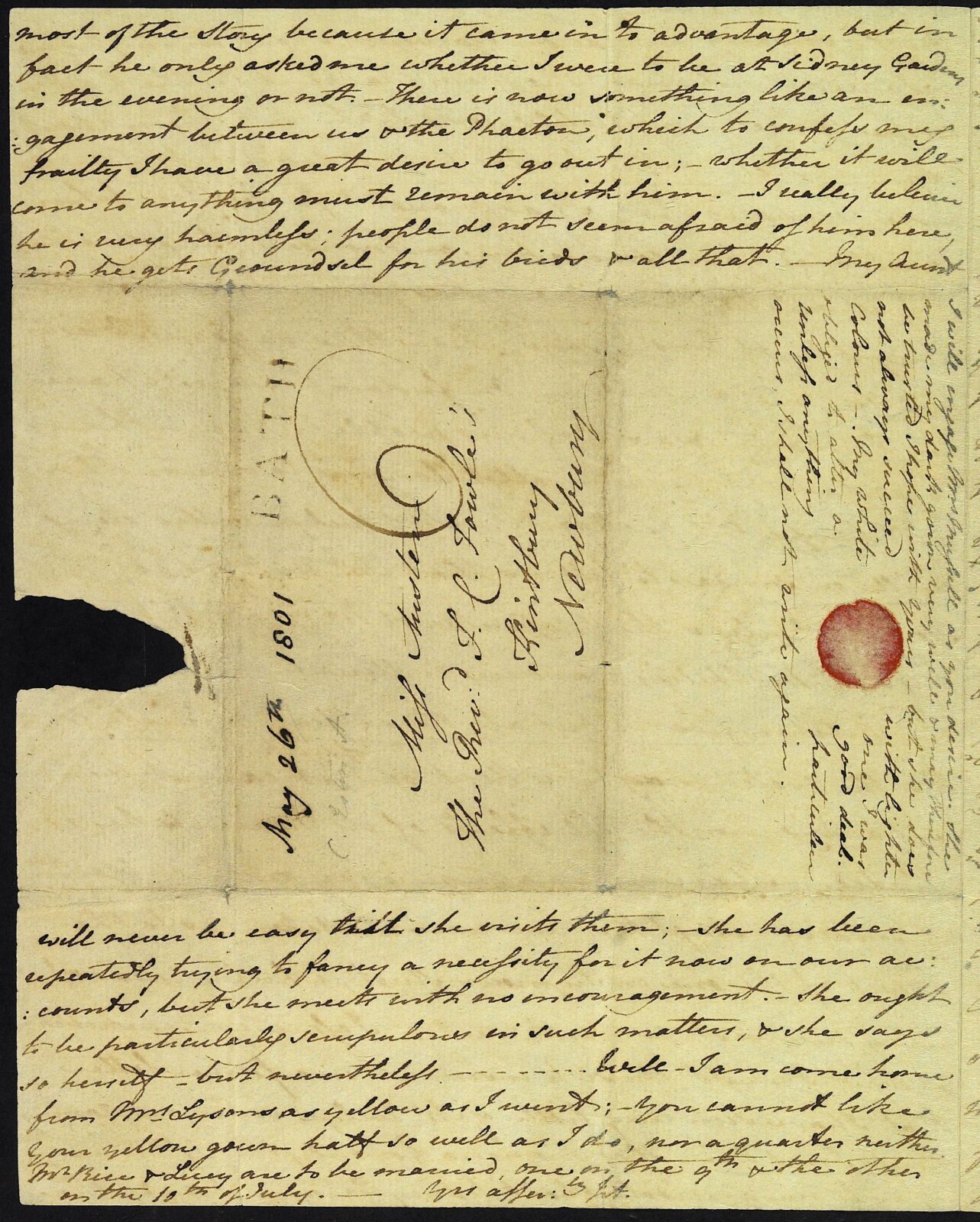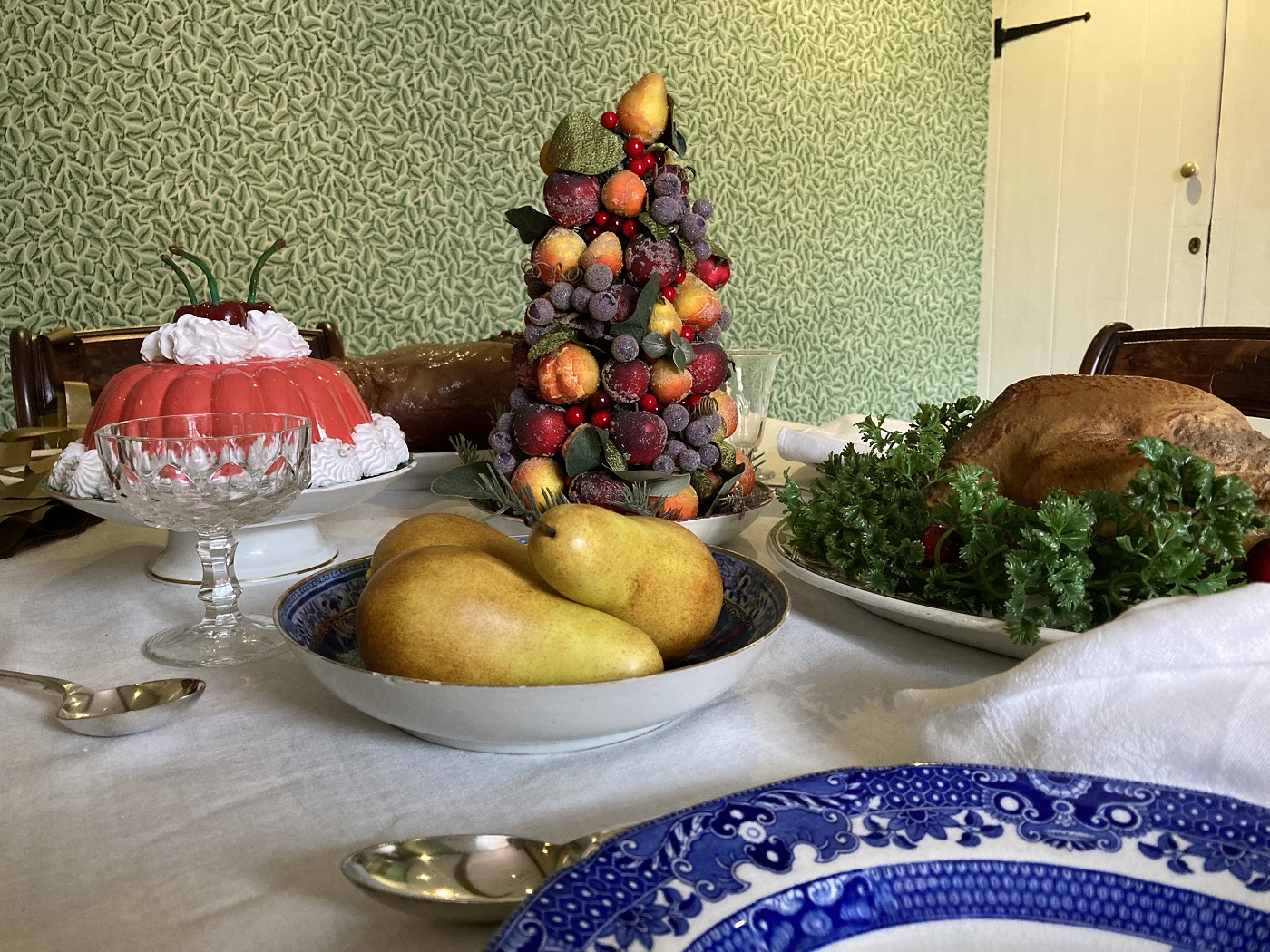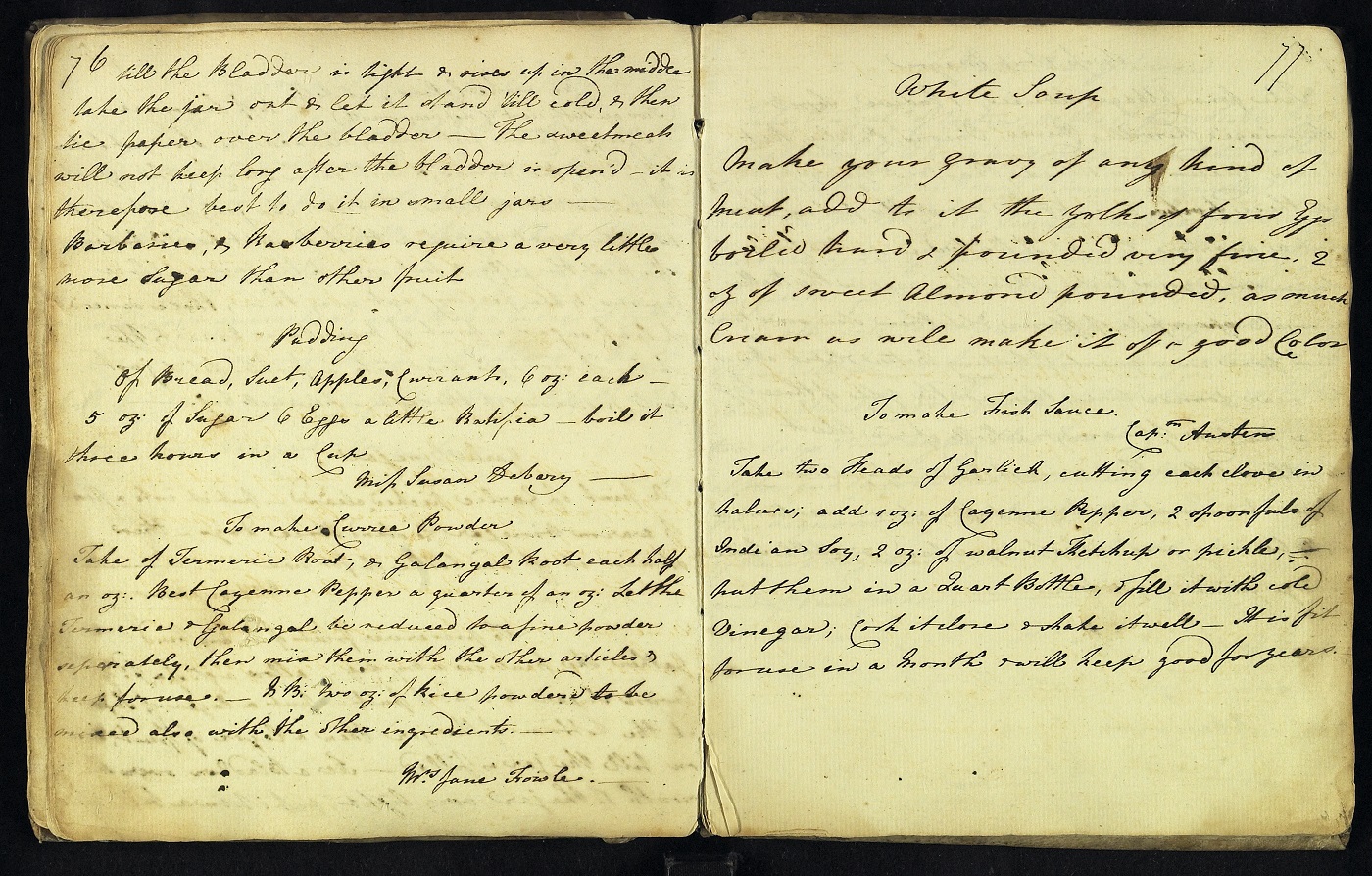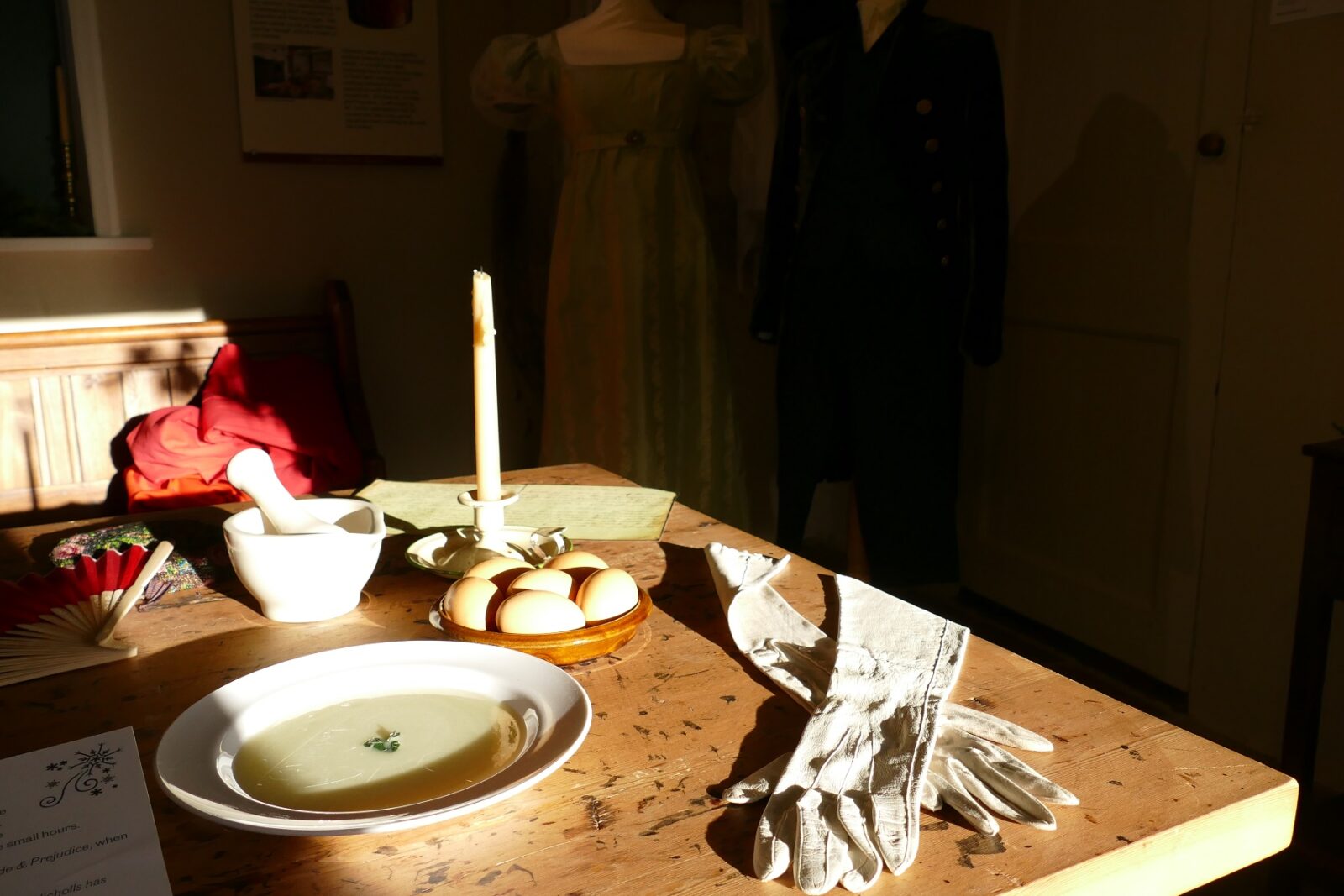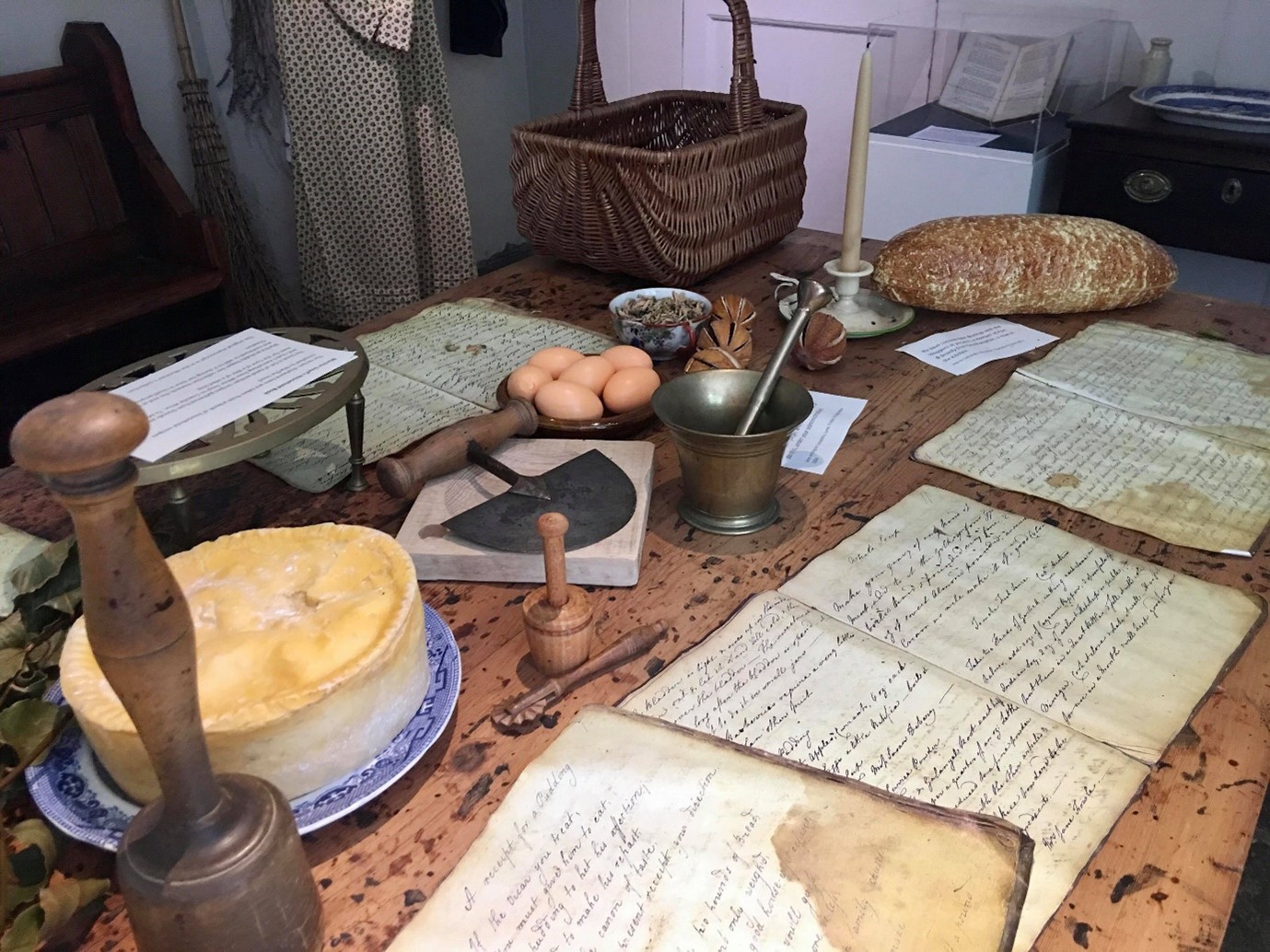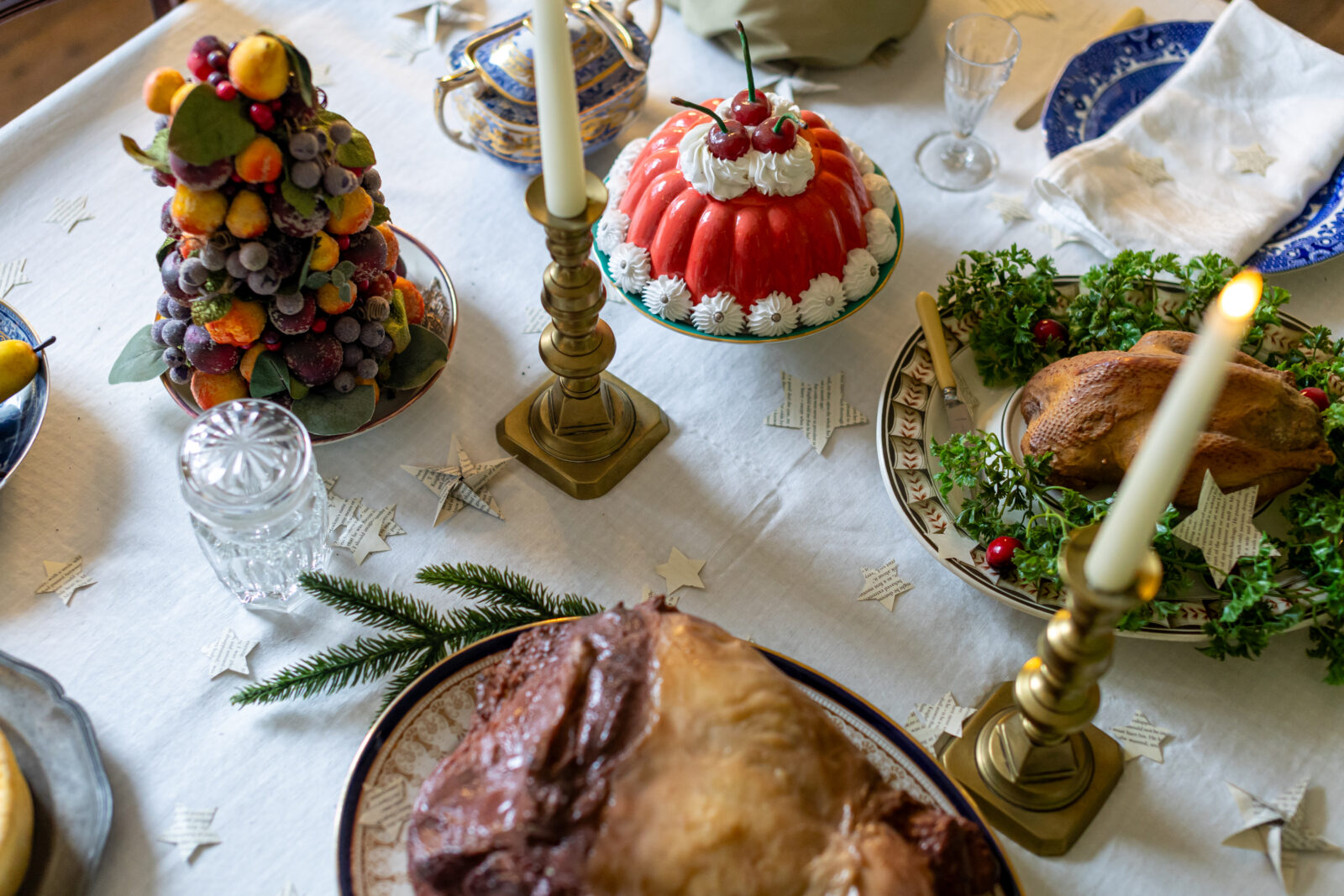White Soup is Not Enough: Food and Drink at the Netherfield Ball
As we warm up for Pride and Prejudice Day on 28 January, our Creative Engagement Officer Ellora Sutton dives into the intricacies of eating and drinking at a Regency ball...One of the most iconic scenes in Pride and Prejudice is the Netherfield Ball, thrown by Mr Bingley at the insistence of the two youngest Bennet sisters. It’s where Elizabeth confronts Mr Darcy about Mr Wickham, it’s where Mary “delights” people for rather too long with her music, and it’s where, over dinner, Mrs Bennet mortifies Elizabeth by boasting to Lady Lucas about the great match her eldest daughter is about to make with their wealthy host.
But what was a ball really like? They were riotous affairs, not starting until late in the evening and going on well into the early hours of the morning. Food played an important part in keeping dancers energised for a long night of quadrilles and flirting. Jane Austen writes of the curative power of a good meal at a ball in a letter to her sister Cassandra, May 1801:
“Before tea, it was rather a dull affair […] After tea we cheered up; the breaking up of private parties sent some scores more to the Ball”.
So what food might have been on offer at Netherfield to send Lizzy and Mr Darcy to the Ball?
“two full courses”
Food would be laid out in ‘courses’, each course made up of several dishes, sweet and savoury laid out side-by-side, a bit like a buffet. When Mrs Bennet fantasises about having Mr Bingley over for dinner, she dreams of two courses. That’s not just two dishes, but two tables of dishes!
Experts would print maps of dinner tables, prescribing how a course ought to be laid out and what should be included. One such ‘bill of fare’ published in 1807 by John Simpson, in his A Complete System of Cookery, suggests these dishes placed alongside each other in a row: four partridges (at the head of the table), a basket of spun caramel filled with pastries, broccoli with brown sauce, cheese cakes, spinach with croutons, snipes, asparagus, French beans, an apricot meat pie, and towers of Chantilly cream – with more besides. A wealthy young man like Mr Bingley, with a kitchen full of staff, trying to impress his new neighbours, would likely have been close to this ideal ‘bill of fare’.
White Soup
When planning the ball, Mr Bingley has one key ingredient in mind: white soup. He says to his sister: “as for the ball, it is quite a settled thing; and as soon as Nicholls has made white soup enough I shall send round my cards.” But what exactly is white soup?
We can turn to Martha Lloyd, who lived with the Austen ladies here at Jane Austen’s House, for an answer. Martha was a keen cook, collating her own book of recipes over several decades. It is a remarkable piece of social history, and we can learn a lot about what Jane Austen herself was eating from it. This is Martha’s recipe for ‘White Soup’:
“Make your gravy of any kind of Meat, add to it the yolks of four Eggs boiled hard & pounded very fine, 2 oz of sweet Almond pounded, as much Cream as will make it of a good Color.”
It is, in essence, a very creamy, meat-flavoured broth. Other soup recipes in Martha’s book include ‘Veal Soup’, ‘A Soup Curry’, and ‘Mock Turtle’ (stewed calf’s brain with oysters, onion, lemon, wine, and mutton or veal gravy).
“the comforts of cold ham and chicken”
“At length, however, Mrs. Bennet had no more to say; and Lady Lucas, who had been long yawning at the repetition of delights which she saw no likelihood of sharing, was left to the comforts of cold ham and chicken.”
To this day, no party buffet is complete without a nice selection of cold meat to pick at – charcuterie, anyone? In January 1796, Jane writes that her brother James cut up the turkey at a ball with “great perseverance.” At the Netherfield Ball, there’s ham and chicken. Martha has a recipe ‘To make Hams’, requiring “Two legs of Pork, each leg weighing about 15 pounds”, rubbed with “two pound of Brown Sugar” and “one pound & half of Common Salt.” It then has to be left for three weeks before it’s ready to eat, or to serve up as part of your fancy supper.
Cheese?
You can’t have cold meats without a good bit of cheese. Jane grew up knowing the importance of such things – her family kept a small farm, with her mother taking charge of the dairy where she produced her own cheese. This seems to have sparked a life-long love of the stuff. Jane wrote to her sister Cassandra in a letter dated Sunday 24th January 1813:
“We have had no letter since you went away, & no visitor […] but we have received the half of an excellent Stilton cheese – we presume, from Henry [Austen, her brother].”
Incidentally, Pride and Prejudice was published just four days later – 28th January 1813. Jane may well have been nibling on a piece of this “excellent Stilton” as she leafed through the pages of “her own darling child”!
Sweets
Sweet dishes were a way for the wealthy to show off what their cooks were capable of. Think of jellies turned out of elaborate moulds, syllabubs, and sweetmeats, such as candied nuts. There would have also been fruit – maybe even a pineapple, if you were obscenely rich. Jane seems to have been a lover of jelly, the perennial party food. Writing after a party in January 1813, Jane says:
“I was rather head-achey that day, & could not venture on anything sweet except Jelly; but that was excellent.”
Sweet, but not too heavy on the stomach for dancing. Another option might be a trifle. Martha Lloyd’s recipe for trifle sounds dreamy, and grand enough for a house like Mr Bingley’s Netherfield. She soaks Naples Biscuits (a crisp biscuit flavoured with rosewater) in sack (fortified white wine), covers them with more than a pint of custard and tops the whole thing with whipped syllabub. She offers this advice for trifle-makers: “the higher it is piled the handsomer it looks.” Maybe even handsome enough to tempt Mr Darcy!
Drink
Of course, you’re going to need something to wash all of this down, and a ball could be a bawdy, boozy affair. Jane paints a very colourful picture of a ball in Bath, May 1801:
“Mrs Badcock thought herself obliged to run around the room after her drunken Husband. – His avoidance, & her pursuit, with the probable intoxication of both, was an amusing scene.”
Martha provides not one, but two recipes for a particularly tasty-sounding tipple called ‘Noyeau’. The first infuses brandy with apricot kernels, sugar, cinnamon, and powdered coriander seeds. In Martha’s later variation on the recipe, gin is infused with bitter almonds, and then sweetened with plenty of sugar. She also has various recipes for wines flavoured with orange, gooseberry, cowslip, and currants – although it’s easier to imagine Mr Bingley serving something like Madeira or Constantia wine, both popular at the time.
Even Jane herself wasn’t immune to the temptations of ballroom booze, writing to Cassandra in November 1800, the morning after a ball thrown by Lord Portsmouth:
“I believe I drank too much wine last night at Hurstbourne; I know not how else to account for the shaking of my hand to day”
